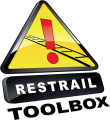2.2Learning from national experience
This measure concerns monitoring the national interventions previously conducted and learning from own experience in order to improve or innovate the prevention practice.
- Make sure your staff includes suitably trained persons for research, audit and analysis.
- Evaluate the measures you are implementing and share your results. Need to be sure that the data being compared is based on the same definitions.
- You can use periodic time intervals to conduct re-evaluations. For example, in Belgium, INFRABEL conducts substantial re-evaluations at approximately 4 yearly intervals.
- Publish annual reports.
- Be aware that monitoring and learning from national experience is not really a measure that would reduce railway suicides and trespassing accidents as such. It can only promote the effective adjustments of preventative programmes.
- There is need for good collaboration between organisations as there may be different organisational philosophies which could be problematic (e.g. some may accept the need for continual learning whilst others may not, best practice interventions may not be necessary in some countries, depending upon the nature of the problems of suicide and trespass).
- Learning may need to be coupled with other interventions to support dissemination and process changes as a result of any findings. There may need to be a coordinating role for cross-industry improvements, with support from all relevant organisations within the industry.
- See an example from Switzerland of learning from national experts on suicide prevention. Contact person: Tomas Reisch
- Considerable potential for preventive learning can be derived from broader and more systematic case investigations, if they are carried out immediately and as an integral part of regular railway safety work (Rådbo, Svedung, & Andersson, 2012).
- In the Netherlands, ProRail’s experience shows that preventative actions should always be combined: e.g. 2006-2008 there were 30 locations where multiple measures were taken such as removing bushes, improving lighting at crossings, fencing tracks and other items of equipment; 10 more locations were “optimised” in the same way in 2011, as well as introducing 113 signs at 9 locations. Future work is planned in a large area (20km radius), including pilot testing of new equipment.
- In the UK, the periodic RSSB reports provide strong and intrinsic support for learning from previous national experience: www.rssb.co.uk
last update: 2015-01-27 Print

